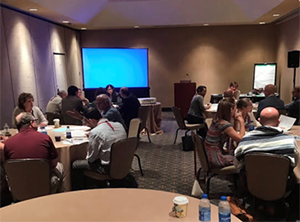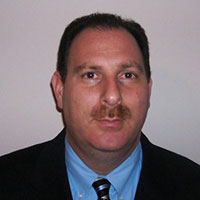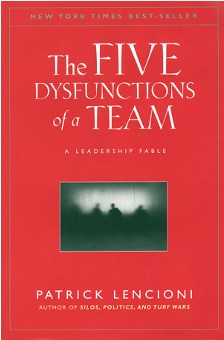My First SEA Meeting
 |
|
Michael Sandison, MD
Professor Emeritus
Albany Medical College
|
Those people turned out to include Kathy King and Cathy Kuhn from Duke. At that time the Residency Review Committee had mandated that the departmental chair serve also as Program Director. Many chairs designated a faculty member as “Director of Education” or some such title. I had just been appointed to this “Quasi-PD” position by my outgoing chair at Albany Medical College. My predecessor, Kevin Roberts, had been appointed Acting Chair of the department. As he handed me a SEA newsletter, he offered me two words of advice for the new role: “Join SEA.”
I was woefully unprepared for this new position. Although I was regarded as a decent teacher by the residents and faculty, my approach to teaching was based simply on emulating my best teachers at the University of the Witwatersrand in Johannesburg. That first SEA meeting opened my eyes to the discipline of pedagogy and the possibility of a career in anesthesiology education. I returned home after that meeting recharged with a sense of direction, possibility and purpose.
Several meetings followed. I started making notes entitled: “Ideas from SEA”. The oldest list that I found was from the Spring Meeting of 2000, and it included a talk by Phil Lui entitled “Characteristics of Extraordinary Anesthesiologists: Implications for Anesthesia Education”. I later adapted that talk for inclusion in our introductory didactic program. Other entries in my notes include, “Look up the full Bloom’s Taxonomy”, (testimony to my lack of preparation as an educator) and “Writing is Thinking”.
That meeting led to my attending the SEA Workshop on Teaching, where I encountered people like Gary Loyd, Melissa Davidson, and Mike Olympio. This workshop laid the foundation for my ongoing education and professional development.
Over the next twenty years, SEA spring and fall meetings followed in places like Cleveland; Montreal; Harrisburg; Washington, DC; Nashville, and Santa Fe; with some of the best meetings being held in smaller cities, which I would never have thought to visit. “Dine Arounds” hosted by local SEA members gave me an insider’s perspective and a better appreciation of this vast and varied country. Friendships and collaborations followed. These relationships blossomed into mentorships and provided opportunities both to support and to be supported by others in the Society.
SEA has been central to the development of my professional career as an anesthesiology educator. I am grateful that I took Kevin’s advice to attend that first meeting.


















 decrease burnout and bolster mental wellbeing. Traditionally, interclass friendship and camaraderie vital for the forthcoming clinical years stems organically from frequent social interactions both within and outside the hospital. However, due to infectious concerns, many of those opportunities are not possible this year. With some creativity, we supplemented their curricula with online weekly social hours to facilitate debriefing, decompression, and growth as a class as well as a structured 1:1 peer mentorship program that paired rising CA-1 residents with senior mentors to provide psychosocial support, encourage self-reflection, and bolster professional connectedness.
decrease burnout and bolster mental wellbeing. Traditionally, interclass friendship and camaraderie vital for the forthcoming clinical years stems organically from frequent social interactions both within and outside the hospital. However, due to infectious concerns, many of those opportunities are not possible this year. With some creativity, we supplemented their curricula with online weekly social hours to facilitate debriefing, decompression, and growth as a class as well as a structured 1:1 peer mentorship program that paired rising CA-1 residents with senior mentors to provide psychosocial support, encourage self-reflection, and bolster professional connectedness. high fidelity, was used extensively to educate our medical students. A simulation session that seemed straightforward before the pandemic took substantially more effort because we had to sanitize all the equipment and operate the simulators without the aid of technicians. Finding masks, gloves and sanitizing equipment was challenging. The debriefing skills that I obtained over the years helped to address and humanize medical students’ and residents’ concerns about COVID-19 and the effects on their education.
high fidelity, was used extensively to educate our medical students. A simulation session that seemed straightforward before the pandemic took substantially more effort because we had to sanitize all the equipment and operate the simulators without the aid of technicians. Finding masks, gloves and sanitizing equipment was challenging. The debriefing skills that I obtained over the years helped to address and humanize medical students’ and residents’ concerns about COVID-19 and the effects on their education.
 This was another successful year for the SEA/HVO Fellowships. We received 22 applications and awarded 8 Fellowships. See the HVO announcement below. The new Fellows will be traveling to Vietnam, Rwanda or Ghana for their month of teaching anesthesia residents, anesthesia nurses or anesthesia clinical officers. Congratulations to them all.
This was another successful year for the SEA/HVO Fellowships. We received 22 applications and awarded 8 Fellowships. See the HVO announcement below. The new Fellows will be traveling to Vietnam, Rwanda or Ghana for their month of teaching anesthesia residents, anesthesia nurses or anesthesia clinical officers. Congratulations to them all.




